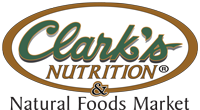Search Healthnotes

Related Topics
-
Kid-Friendly Recipes
-
For Healthier Kids, Start with Healthier Food
-
Kids Need Iodine for a Healthy Brain
-
Childhood Diseases
- By Suzanne Dixon, MPH, MS, RD
How to Avoid Arsenic and Still Enjoy Juice
Following reports by famed Dr. Mehmet Oz indicating that some apple juices exceed the drinking water safety limits for arsenic, Consumer Reports conducted tests that confirmed these findings: Approximately 10% of 88 apple and grape juice samples tested contained more than 10 ppb of arsenic. Arsenic levels are a concern because exposure may increase the risk of short- and long-term health problems, especially in kids, who, with their smaller size, are especially vulnerable and are often given juice. Fortunately, a few precautions can go a long way toward keeping your family safe.
Diluting juice with water can lower the amount of juice your kids drink
Arsenic type is key to risk
Arsenic comes in two forms: organic and inorganic. Organic arsenic forms naturally in certain foods, such as fish. This type of organic arsenic, known as arsenobetaine, is considered nontoxic.
Chronic exposure to inorganic arsenic, however, has been linked to a host of health problems including high blood pressure, diabetes, reproductive problems, and bladder and other cancers. In children, chronic inorganic arsenic exposure may lead to diminished intelligence and dramatically higher rates of lung cancer later in life. In addition to fruit juices, inorganic arsenic is found in some foods and drinking water from some private wells.
Checking on consumer safety
In addition to testing the juices, Consumer Reports also studied the connection between drinking juice and arsenic exposure. People who regularly drink apple juice had 19% higher urine arsenic levels than non-apple juice drinkers. Grape juice drinkers had 20% higher urine arsenic levels.
The study didn’t include children under six, which means the findings may underestimate young kids’ arsenic exposures. Dr. Robert Wright of Harvard University explains, “Because of their small size, a child drinking a box of juice would consume a larger per-body-weight dose of arsenic than an adult drinking the exact same box of juice.”
Keeping arsenic in check
While it is impossible to avoid all inorganic arsenic, several steps can limit exposure:
- Watch the juice. According to the American Academy of Pediatrics, infants up to six months shouldn’t drink any juice; children up to six years old should consume no more than 4 to 6 ounces daily and older children, no more than 8 to 12 ounces per day. Diluting juice with water can lower the amount of juice your kids drink.
- Choose organic. Conventionally raised poultry can be raised on feed that contains arsenic, while organic standards prohibit this practice.
- Educate yourself. While arsenic-based agricultural chemicals are no longer legal in the US, if they have been used in a certain area, even decades ago, those soils may still contain traces of arsenic, which can then end up in food. The Consumer Reports findings are detailed and comprehensive, so to get the full picture, be sure to read the full report, available at their website, www.consumerreports.org.
- Test your water. If you drink well water, regularly test your well for arsenic and other contaminants. Call your local health department or the federal Safe Drinking Water Hotline at 800-426-4791 to find a certified testing lab in your area. If the results indicate too much arsenic or other heavy metals, install a water purification system or switch to bottled water until you can do so.
- Test yourself. Ask your doctor about urine arsenic tests if you are concerned that you or your kids have been exposed to excessive arsenic levels from food, juice, or water.
(“Arsenic in your juice.” Available at www.consumerreports.org/cro/consumer-reports-magazine-january-2012/arsenic-in-your-juice/index.htm. Accessed December 4, 2011.)










